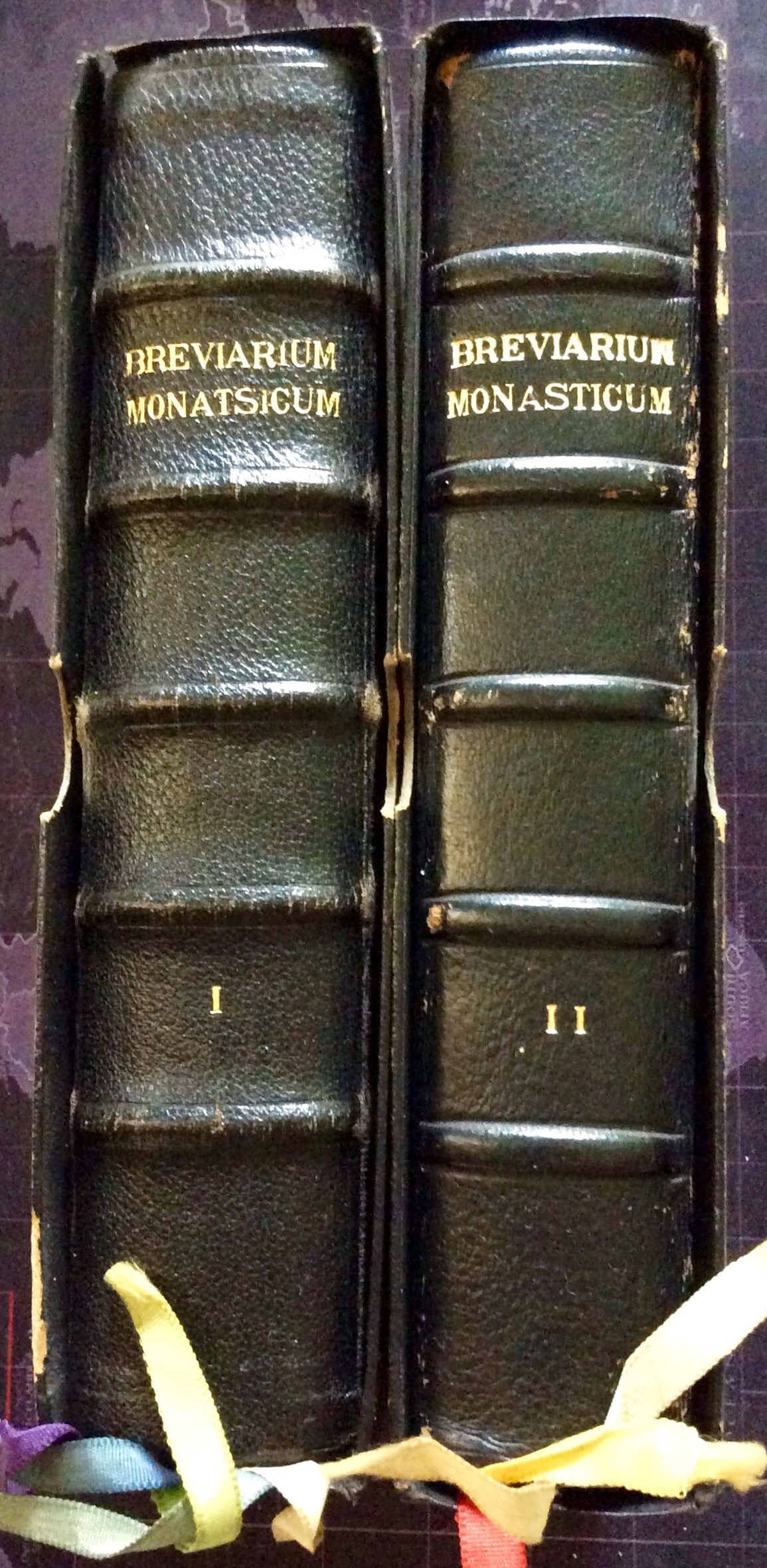Some people actually seem interested in this, so herewith the penultimate post about the cloister hoard.
**NB In this series, any picture is able to be clicked to reveal the full-sized version.**
Today, office books. First is this diurnal, ie the day hours off the office as found in the monastic breviary.
Printed in 1938 by Dessain in Belgium, it is yet another example of the wonderful personalization of such volumes to the particular Benedictine congregation using them. This one is so finely adapted that it is has supplements according to the particular house.
Below you can see the supplements for Douai, the Conventus of St Edmund. It is also well supplied with memorial and ordination cards, including this one for Dom Maurus Winter of Altenburg who was ordained to the priesthood at Douai by John Henry King, Archbishop-Bishop of Portsmouth († 1965).

Next we come to the two publications which form the vast bulk of the cloister hoard. First, the four-volume personal set of the monastic breviary which every monk would have had, for use when travelling or on the mission. Thus the volumes are small and very portable.
Again published by Dessain in Mechlin (Malines), Belgium, the volumes are arranged according to season—not liturgical but natural: spring, summer, autumn and winter.
Again they are adapted at time of binding to the EBC.
One set stands out from among the rest. It is a set covered in brown leather.
From the loose cards and notes it almost certainly belonged to Dom Lorenzo Nardini, a monk from the Italian nobility who transferred to Douai between the wars. Here we see a note in Italian and a memorial card to Dom Lorenzo’s father, Carlo, who had been Italian consul in Paris.

In Abbot Geoffrey Scott’s centenary history of Douai Abbey, he writes:
Finally, there was the famous Dom Lorenzo Nardini, ‘Romanus Romanorum’, an Italian aristocrat who had been professed at Cesena, Italy, in 1873, then lectured in Louvain where he became friendly with Leopold III, King of the Belgians; after arrival in England where he taught theology at Belmont, he came to live at Woolhampton in 1925. He owned one of the two cars to be found at Douai during the Second World War, and was arrested and interned, but was allowed to retain his car provided he did welfare work among Italian internees.
The second publication that constitutes the bulk of the booty is the two-volume choir edition of the monastic breviary.

Most are in very good condition, as they were probably not overly used in choir as the Antiphonale would have carried the bulk of the liturgical labour.
The endpapers in some volumes are striking!
This volume has an embossed stamp from Hayes & Finch (from its glory days no doubt).
The artwork is beautiful and of superb quality. It is published by the renowned Belgian printers, Desclée de Brouwer of Bruges.
Of course there is an EBC appendix, including diocesan feasts for the various houses, approved by Abbot President Edmund Kelly, a monk of Douai.
It also has inserts adapting to changes such as new feasts.
Lastly, there was an edition of the Douay-Rheims bible, in lovely condition.

It caught my attention because it was published by Francis Tucker, whose vestments I only discovered a couple of years ago, and am now surprised again to find they did quality publishing.
In the next and last instalment, missals!













OK, I’ll bite: what’s the back story of the Archbishop-Bishop of Portsmouth?
All I know is that the archepiscopal rank was a personal title, though that probably does not surprise you. However, one monk here is bound to know more. I will ask him tonight and update here. 😀
Oh wow Father—real treasures to be certain!!!
Books contain so much history—that of which they speak as well as the notes, thoughts and hidden treasures inserted by those who have gone before as it were…
In this age of the digital, I am always drawn back, preferring the tangible—as in actually holding, feeling, touching and even in some cases smelling these works of labor and love—
happy treasure hunting—and we might need to add librarian to your list of titles 😉
Only adding to the treasure is the typo on the spine of Volume I of the choir set of the Monastic Breviary!
I wish this were my cupboard!
Oh gosh! I had totally missed that. Nice work. 👍
PS I just found its exact companion volume. It has the typo too. 😂
Now that’s quite a trained eye! Surprised I missed it along with others who should have known.
There were so many other things to look at!